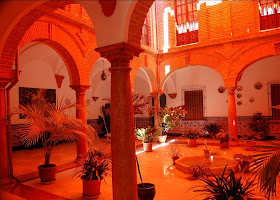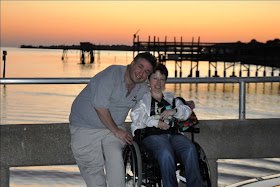 AN INTERVIEW WITH NOBEL PRIZE
AN INTERVIEW WITH NOBEL PRIZE
FOR LITERATURE WINNER MARIO VARGAS LLOSABY HEIDI JOHNSON-WRIGHTPeruvian writer Mario Vargas Llosa is so many things he is best described as a modern-day Renaissance man.
Politician, playwright, art, film and literature critic and essayist, he is perhaps best known as one of a handful of novelists that have brought contemporary Latin American literature to the forefront internationally.
Always fascinated by Latin American culture and literature, I remember years ago picking up a copy of Vargas Llosa's Aunt Julia and the Scriptwriter, a humorous and semi-autobiographical novel brimming with eccentric characters and plot lines that blend fantasy with reality. From the first chapter I was hooked on the book and on Vargas Llosa the writer.
I read the author's Death in the Andes on a plane ride from Ohio to Miami. All I need do is summon the memories of that trip and I am once again transported into the sinister, unsettling tale of mysterious murder: a sort of primitive Blue Velvet set in the Peruvian mountains.
I still remember recouping from surgery one summer and devouring The Notebooks of Don Rigoberto, a sophisticated dirty book in the finest sense of the term.
With fondness I recall reading The Storyteller, a riff on culture, identity and anthropology. The colorful fables Vargas Llosa intersperses throughout the storyline are stunningly, achingly beautiful.
Winner of many accolades, including Spain's Cervantes Prize and the National Book Critics Award, as well as losing candidate in the Peruvian presidency race in 1990, Vargas Llosa is not shy about offering his penetrating insights on everything from literature to politics.
We met at the Miami Book Fair International. Established in 1984, this world-renowned annual event celebrates books, reading and writing against the backdrop of Miami's richly diverse community. For eight days each November, internationally acclaimed writers read from their works, speak and interact with the public at lectures and question-and-answer sessions. In addition to the literary programming is a mammoth three-day book fair of several hundred national and international exhibitors, including the world's largest publishing houses.
In 2001, the fair featured Vargas Llosa, as well as Nobel Prize winner V. S. Naipaul, Vernon E. Jordan, Jr., Laura Esquivel, Rabbi Harold Kushner and scores of other writers, both established and new to the literary scene.
In past years, the stellar lineup has included Edward Albee, Isabel Allende, Maya Angelou, Saul Bellow, Oscar Hijuelos, Stephen King, Norman Mailer, Joyce Carol Oates and John Updike.
It is especially fitting that Vargas Llosa made a stop in Miami to promote The Feast of the Goat. Feast is a fictionalized account of the real-life reign of the oppressive, ruthless Dominican dictator, Rafael Trujillo, who was assassinated in 1961.
With its large Cuban exile community, as well as communities of immigrants from other Caribbean and Latin American countries, Miami's residents are particularly sensitive to the issues of political oppression and the abuse of power.
One need only visit the coffee windows and cafeteria counters of this city to find those who have risked all to come here. Some have come by plane, others by boat and still others by crudely constructed vessels that seem to have been blessed by divine intervention to have made it across the Straits of Florida to this place whose tropical breezes whisper promises of a better life.
Promises that are believed in so fervently that one little boy's personal family tragedy had the power to polarize observers on an international scale.
In Miami, the personal is often the political.
Vargas Llosa meets me in the cavernous lobby of the downtown Hotel Inter-Continental. He is dressed in gray sport coat, gray trousers and a striped dress shirt sans tie, looking not unlike a courtly college literature professor. In his mid-60s, his striking profile and distinguished salt and pepper hair can still turn women's heads.
"It is a pleasure," he says, as he smiles warmly and shakes my hand.
Though having just arrived from the airport -- having flown from New York City where he's been promoting the book -- he is pleasant and focused, adept at putting others at ease.
He explains that The Feast of the Goat had its genesis more than a quarter century ago when Vargas Llosa visited the Dominican Republic on a film project.
While there for several months, he heard numerous stories and anecdotes about Rafael Trujillo. And though Latin America has never been in short supply of dictators, Trujillo's was the "most emblematic of dictatorships," particularly in scope and grotesqueness. He was virtually unparalleled for his brutality, corruption and human rights abuses. "Trujillo created an opera in his real life. He was the director and the Dominican people were the actors."
This grand drama, this theatricality of the regime encouraged Vargas Llosa to fantasize about writing the novel. "A novel is not a book of history, " he says.
And in keeping with his oft-repeated philosophical belief that novels should enhance and amplify life, not merely recount it, he has taken some liberties with history. But he quickly adds that "with essential facts, I have been loyal."
It was important to Vargas Llosa to not portray Trujillo as a monster from the get-go, but rather as a human being who lost his humanness as he accumulated power. He strongly believes that such a transformation is fueled by "the complicity of the people," and by "the abdication of the right to resist."
He becomes even more emphatic at this point, and one catches a glimpse of the personal passion that sparked him to run for president of Peru. "Humans must resist (tyranny), especially at the beginning. Later it is harder to resist once the system is in place. But it is always possible."
He clarifies: "I'm not in favor of violence, but some dictatorships leave no margin. In some cases, as with Trujillo's assassination, violence can be justified."
When asked about what it was like to research and write the passages on the torture of the captured assassins, he wrinkles his face and says, in his charmingly accented English, "It was -- how do you say? -- nauseating."
Yet he knew he couldn't avoid it, given that violence was an essential character of Trujillo's regime. The challenge was gaining the acceptance of readers without turning them off. This he found very difficult.
The conversation turns to the book's female protagonist, Urania Cabral, the daughter of one of Trujillo's ministers and a victim of Trujillo's political and personal barbarity. Vargas Llosa explains that, although Urania was an invented character, what happened to her happened to many Dominican women. "Women were the worst victims of the dictatorship," because they were also often victims of machismo.
In his research, Vargas Llosa uncovered true stories of Dominican families making gifts to Trujillo of their young daughters when the dictator would visit different regions of the country. Trujillo also used sex as an instrument of power to humiliate and degrade his collaborators, sometimes openly sleeping with their wives as they chose to look the other way. In this way his minions proved their loyalty.
Though Vargas Llosa has sworn off ever running for political office again, the subject naturally comes up when discussing statecraft. He has said in the past that he failed as a politician because he was too honest. "During my presidential campaign, I didn't lie. I would tell [the people] exactly what I was going to do. It was very unpolitical; it made me vulnerable. [The opposition] used my frankness to destroy my candidacy," he relates, without even a trace of bitterness.
In regard to the writing process, the topics of his books often concern things that have touched his life, though he does not go looking for them. "I don't choose my subjects; I am chosen by them." When that happens, he feels "a curiosity, an entusiasmo," he says, using the Spanish cognate.
Before he even begins to write, he has been working on mapping out episodes and character/plot trajectories. When the writing starts, he works hard, remaining very disciplined. "Each novel is an adventure."
He says passionately: "I don't like the feeling of emptiness when you finish a book," a process than can take several years. To cope, he accumulates projects and immediately jumps into the next one. "I don't like to be nostalgic about projects."
So what does the future hold for Mario Vargas Llosa?
"I want to keep writing -- I enjoy it enormously. I have never felt the emptiness which paralyzes some writers. I have much more projects than time," he explains.
Native Ohioan Heidi Johnson-Wright resides in Miami, Florida where she treasures the sea, sunshine and Cuban coffee.Miami Book Fair International takes place November 14-21 2010
http://www.miamibookfair.com/











.JPG)





.JPG)
.JPG)










